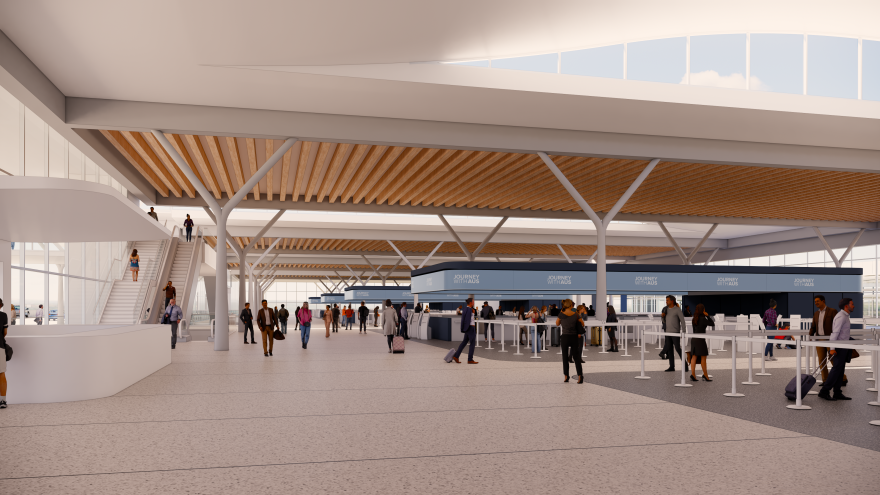Austin-Bergstrom International Airport, already bursting at the seams, will see its largest-ever expansion start to take final shape after a City Council vote. For travelers, the decision will lead to more gates, more terminal space and possibly higher ticket prices.
The council's action on Thursday gives airport staff the green light to finalize a long-term deal with seven major airlines: Southwest, Delta, United, JetBlue, Spirit, American and Alaska. The 10-year contract unlocks billions of dollars and sets the scale of ABIA's two most public-facing expansion projects.
One is a new concourse with 20 to 30 gates, connected to the Barbara Jordan Terminal by an underground tunnel. The other is a massive "Arrivals and Departures Hall" the size of six football fields that will serve as a new front door to the airport and bring rideshare pickup back to the curb.

When the expansion is complete in the early 2030s, ABIA's annual capacity will grow from 15 million travelers to more than 31 million, giving some breathing room to a city-owned facility already serving more than 20 million passengers a year.
The so-called "use and lease" agreement with the seven airlines — almost three years in the making — locks in the carriers' support for the expansion and seals a commitment to lease yet-to-be-constructed space.
"We're hearing from the airlines that they want more than 20 [additional gates]. So now we've got to make sure that we are scaling up the rest of the projects at the airport," Austin Aviation Department Assistant Director Sam Haynes said. "We need to build parking infrastructure, curbside [facilities], security checkpoints to meet the passenger activity."

The far-reaching contract, effective from January 2026 to September 2035, sets complex formulas to calculate how much airlines pay for everything from gates and ticketing counters to baggage claim and equipment storage. Big cargo carriers could sign on, too.
Exact details will remain under wraps until airlines sign off by the end of the year. But some information has trickled out.
ABIA's financial chief Rajeev Thomas said carriers will pay about $20 for each passenger who boards a plane, up from the current $15 — a cost increase that could show up in ticket prices.
"I can't speak for how the airlines will manage that," Thomas told airport commissioners this month when asked if it could impact ticket prices. "But there are other airports within that range currently, where they are at a $20 cost per enplanement."
Southwest Airlines, the biggest carrier at ABIA, has revealed it hopes to become the flagship airline in the new concourse. The Dallas-based carrier already leases 10 of the airport's existing 34 gates and is looking to nearly double that footprint.
"We look forward, pending approval, to being the anchor tenant in the new Concourse B," Southwest lobbyist Sherri Hull told airport commissioners. "We're going to grow our presence to 18 gates, pending approval. ... That signals not just a lot of gates, but a lot of flights."

Airlines with fewer flights — including Aeromexico, Air Canada, British Airways, Copa, Hawaiian, KLM and Lufthansa — operate on month-to-month contracts. They pay 15% more than airlines operating under the decade-long contract. Rates are adjusted every year.
Ultra-low-cost carriers Allegiant and Frontier will remain at the South Terminal until it's closed early next year. The city plans to demolish the building to make space for a $347 million pair of taxiways, the roads that get planes to and from runways.
Both discount airlines will receive new month-to-month agreements in September, their first chance to commit to moving from the bare-bones South Terminal to the more costly Barbara Jordan Terminal.

The public won't learn the final gate count until the airlines approve the deal by January. The total cost of the expansion should be confirmed then, too. An official price tag of $4 billion has long been used as a placeholder estimate.
"Unlike many large airports in the United States, [ABIA] is not a hub to any single airline, and that makes this a vote of confidence from our collective signatory airline partners," ABIA business officer Tracy Thompson said. "They are choosing to make long-term commitments and big investments in Austin because they believe in the growth of this market and in our region's future."









